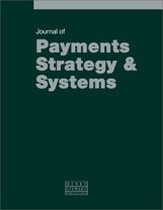The State of Illinois E-Pay Program: How the program was developed and its operational requirements in practice
Abstract
During the mid to late 1990s and throughout the current decade, television, the internet and the way in which people communicate via the web or mobile devices changed dramatically. With this change, the form of payment method and acceptance evolved considerably. Understandably, this statement is nothing new to those whose duties revolve around treasury management or collection/remittance processing functions or for those who attend conferences and read journals. A conversation that is not often discussed, however, is payment acceptance from a holistic view within government, whether state or local. Traditional payment services in the government sector included writing a cheque at the point of sale or putting a remittance slip and a cheque or money order in the post, which was processed either within the agency department or in a lockbox facility. In the retail sector, old credit card imprinters were being pushed aside to make room for credit card terminals and printers. Initiatives in the retail business world allowed credit cards, cheques and cash all to be accepted, with a single solution to tie all of it together for ease of reconciling at the end of the day. Government simply needed to catch up. State and local government had their own set of complexities This paper investigates the procurement and establishment of a state-wide payments program, including processing fees and solutions via the point of sale, the internet, integrated voice response, electronic cheques and other automated clearing house transaction processing services. It also provides lessons learned and key takeaways about breaking traditional practices within government of accepting cash or cheques.
The full article is available to subscribers to the journal.
